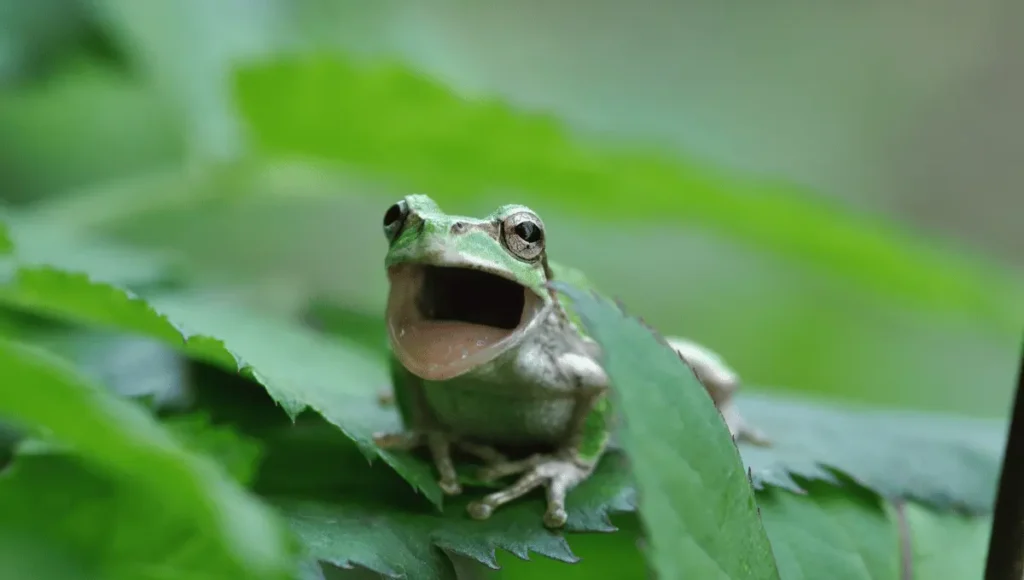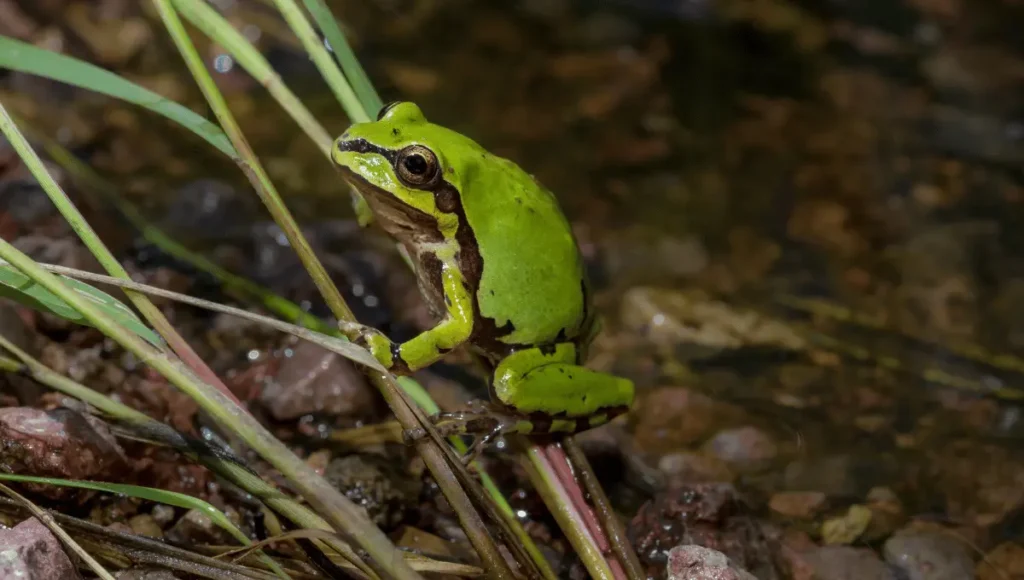Introduction
Arizona is home to a fascinating variety of frog species, each uniquely adapted to the state’s diverse environments. From the dry desert to the lush riparian zones, Arizona frogs have evolved to survive in harsh conditions while maintaining essential roles in their ecosystems.
These creatures are not only interesting to observe but also vital for maintaining balance in their habitats. Whether you’re a nature enthusiast or simply curious about wildlife, discovering more about the different species and behaviors of Arizona frogs will open your eyes to their importance.
Key Attributes For Arizona Frogs

| Attribute | Description |
| Species Name | The scientific and common names of the frog species found in Arizona. |
| Size | The average size of the frog, is typically measured in inches or centimeters. |
| Coloration | The primary colors and patterns (e.g., spots, stripes) of the frog’s skin. |
| Habitat | The typical habitats in Arizona where the frog species can be found (e.g., wetlands, streams). |
| Diet | The common diet of the frog, includes insects, small invertebrates, and other food sources. |
| Breeding Season | The time of year when the frog breeds, is usually tied to specific months or seasons in Arizona. |
| Call | A description of the frog’s call or vocalization, used for communication, especially during breeding. |
| Conservation Status | The current conservation status of the frog species, such as endangered, threatened, or stable. |
| Range | The specific geographical areas or regions within Arizona where the frog species is found. |
Arizona Frogs
Arizona hosts a wide range of frogs that thrive in its varied landscapes, from desert lowlands to mountainous regions. These frogs play a critical role in keeping ecosystems in balance by controlling insect populations and serving as food for other wildlife.
With a mix of common and rare species, Arizona’s frog population offers a glimpse into the resilience of life in harsh environments. Understanding the local species can help in conservation efforts and increase appreciation for these amphibians.
Arizona Frogs Identification
Identifying Arizona frogs can be challenging due to the variation in size, color, and habitats. Most Arizona frogs range between 2 to 4 inches in length and come in colors such as green, brown, or grey, often with distinct markings.
Some species have a light stripe running down their backs, while others may have speckles or warty skin. Recognizing these features is key to identifying the different species that inhabit Arizona.
Additionally, their calls are unique, and listening for their specific trill or croak can help with identification during breeding seasons, especially in the evening when they are most active.
Discovery of Arizona Frogs

Frogs have been a part of Arizona’s ecosystem for thousands of years, with species discovered across various regions. Early herpetologists cataloged many species found in streams, wetlands, and even arid areas, contributing valuable knowledge about their biology and behavior.
Continued research has led to the discovery of new species and subspecies, broadening the understanding of amphibian diversity in the state. With more advanced techniques, scientists continue to study these frogs’ responses to climate change and habitat loss, emphasizing the need for conservation efforts to preserve their populations.
Characteristics of Arizona Frogs
- Adaptation to Dry Environments: Many Arizona frogs can absorb water through their skin, a critical survival mechanism in arid habitats.
- Webbed Feet: Most species have webbed feet, which aid in swimming and escaping predators.
- Nocturnal Behavior: Many frogs in Arizona are nocturnal, staying active at night to avoid the daytime heat.
- Toxin Secretion: Some frogs, like the Sonoran Desert Toad, can secrete toxins to defend against predators.
- Camouflage: Arizona frogs often blend into their environment with earth-toned colors such as green, brown, or grey.
- Burrowing Abilities: Certain species can burrow underground to escape extreme heat and conserve moisture.
- Breeding After Rain: Most Arizona frogs breed in temporary pools formed after rainfall, ensuring moisture for egg and tadpole development.
What Do Arizona Frogs Eat?
The diet of Arizona frogs primarily consists of insects, small invertebrates, and other tiny animals. They are opportunistic feeders, eating whatever is available in their environment. Some common foods include flies, beetles, ants, and spiders.
Tadpoles, the juvenile form of frogs, mostly consume algae and plant material found in ponds or streams.
Adult frogs hunt using their sticky tongues to capture prey, feeding mostly at night when insects are most active. Frogs in Arizona also help control pest populations, making them valuable to their ecosystems and to human agricultural areas.
Arizona Frogs After Rain

Arizona frogs exhibit remarkable behavior after rain, as many species rely on seasonal rainfall for reproduction and activity. After a rainstorm, these frogs become highly active, emerging from burrows or hiding places to breed in temporary pools and streams.
Rain provides the essential moisture needed for egg laying, and tadpoles can develop in these wet environments before they dry up.
The sound of frogs calling after rain is a common occurrence, particularly in the spring and summer, when thunderstorms are frequent in Arizona. This post-rain activity is crucial for the survival of many species.
Distribution of Arizona Frogs
Arizona frogs are distributed across various habitats, ranging from low-elevation deserts to high mountain ranges. The state’s waterways, such as rivers, streams, and ponds, provide essential breeding grounds for these amphibians.
In the northern part of the state, frogs can be found in cooler, more forested areas, while southern regions host species adapted to hot, dry conditions.
Some frogs are restricted to very specific habitats, such as the Chiricahua leopard frog, which is found only in isolated wetlands. The diverse landscapes of Arizona create a wide range of ecosystems where frogs can thrive.
Types of Arizona Frogs

Arizona is home to many types of frogs, each with its own adaptations and characteristics. Here are a few notable species:
| Species Name | Habitat | Unique Features |
| Arizona Toad | Streams, reservoirs | Light stripe across the head, nocturnal |
| Chiricahua Leopard Frog | Springs, wetlands | Endangered, green with dark spots |
| Canyon Treefrog | Rocky canyons, streams | Strong climbers, camouflaged coloring |
| Lowland Leopard Frog | Desert ponds, streams | Long legs for jumping, quick swimmers |
| Sonoran Desert Toad | Desert areas, near water | Toxic secretion, the largest toad species |
Southern Arizona Frogs
In Southern Arizona, frogs tend to inhabit hot, arid areas, making use of temporary pools and streams that form during the rainy season. Species such as the Sonoran Desert Toad and the Lowland Leopard Frog are common in these regions. These frogs are adapted to survive long periods of drought, often burrowing underground to avoid heat and dehydration.
Northern Arizona Frogs
Frogs in Northern Arizona are typically found in cooler, forested areas with more permanent water sources. Species like the Canyon Treefrog and the Northern Leopard Frog thrive in these regions, where they take advantage of the cooler temperatures and the abundance of water. These frogs have evolved to survive colder winters and higher altitudes.
Common Arizona Frogs
Among the most common frogs in Arizona are the Arizona Toad, Lowland Leopard Frog, and Sonoran Desert Toad. These species are frequently encountered in streams, ponds, and even backyard pools. They are well-adapted to their environments and play an important role in controlling insect populations.
Conclusion

Arizona frogs are a fascinating and diverse group of amphibians, uniquely adapted to thrive in both dry deserts and lush riparian areas. With their varied characteristics, behaviors, and distribution, these frogs contribute significantly to maintaining ecological balance.
Learning more about Arizona frogs highlights the importance of their conservation and the protection of their habitats for future generations to enjoy.
FAQs
What Species of Frogs Are Commonly Found in Arizona?
Arizona is home to species like the Arizona Toad, Sonoran Desert Toad, Chiricahua Leopard Frog, Canyon Treefrog, and Lowland Leopard Frog, each adapted to different habitats.
How Do Arizona Frogs Survive in the Desert?
Many Arizona frogs have developed adaptations such as absorbing water through their skin, burrowing to avoid heat, and being nocturnal to stay active during cooler nights.
When Are Arizona Frogs Most Active?
Arizona frogs are typically most active at night, especially after rainfall, when they come out to breed and hunt for food.
What Do Arizona Frogs Eat?
Arizona frogs primarily feed on insects like flies, beetles, and ants, while tadpoles consume algae and plant material.
Why Are Some Arizona Frog Species Endangered?
Habitat loss, pollution, climate change, and diseases like chytrid fungus have led to the endangerment of species such as the Chiricahua Leopard Frog in Arizona.
I am Ismail Jam, and I have a great interest in frogs and toads. These amazing creatures are full of variety and play important roles in nature. I enjoy learning about them and their habitats as I travel and explore different places.